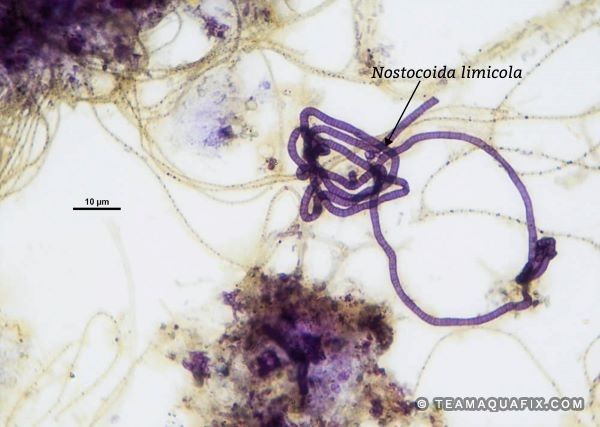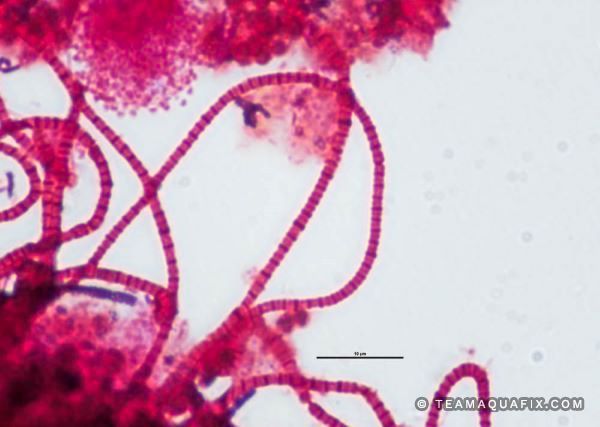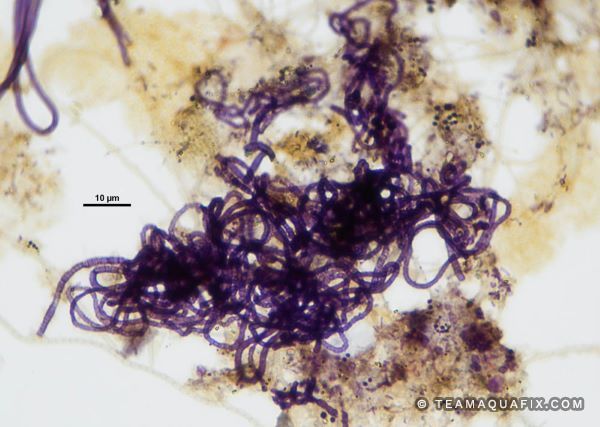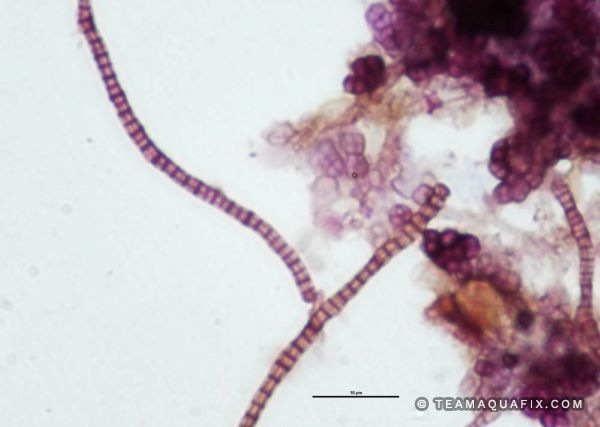Nostocoida limicola
Identification
- Gram and Neisser positive; stain strength can vary
- Has tangled structures
Why Do I Have It?
- Nutrient deficiencies (frequently associated with phosphorous deficiencies)
- Presence of volatile fatty acids (definition below*)
- Mild septic conditions
- Grows within dense floc
Effects on Wastewater Systems
Nostocoida limicola is an indicator organism for numerous possible issues within the plant. It can also cause bulking and create a thin scum layer in a wastewater system.
Treatment
N. limicola tends to be associated with septicity and volatile acids. The driving forces behind these conditions can vary, so if N. limicola is observed within your plant, reach out to the Aquafix Laboratory to allow us to help pinpoint the exact cause of their growth and provide the most effective treatment.
Under the Microscope and in Your Plant
Nostocoida limicola is not a well defined filament and is separated into three different classifications: N. limicola I, II, and III. These filaments stain Gram and Neisser positive, however, the strength of their staining properties varies. All N. limicola varieties have a tangled structure and range between 100-300 µm in length. However, based on these filaments’ significantly different morphology, they may not be closely related. The diameter of the cells for each type differ from each other: N. limicola I contains cells that range from 0.6-0.7 µm in diameter and are oval to spherical in shape, N. limicola II has cells that are 1-1.2 µm in diameter with spherical to oval-shaped cells, and N. limicola III has cells that are approximately 1.5 µm with cells that are spherical to disc-shaped. If abundant enough, these filaments have been known to cause bulking and create a thin scum layer. N. limicola can be identified under 1000x magnification with a Neisser stain. These filaments have no attached growth. Nostocoida limicola is typically observed in conditions with volatile fatty acids and possible nutrient deficiencies, however, the environmental conditions are not well defined and can potentially differ between all three.
*Volatile fatty acids – In wastewater usually the result of partially degraded fats that haven’t been fully metabolized by bacteria.
References
Jenkins, D., Richard, M.G., & Daigger, G.T. (2004). Manual on the causes and control of activated sludge bulking,
foaming, and other solids separation problems (3rd ed). CRC Press LLC.




